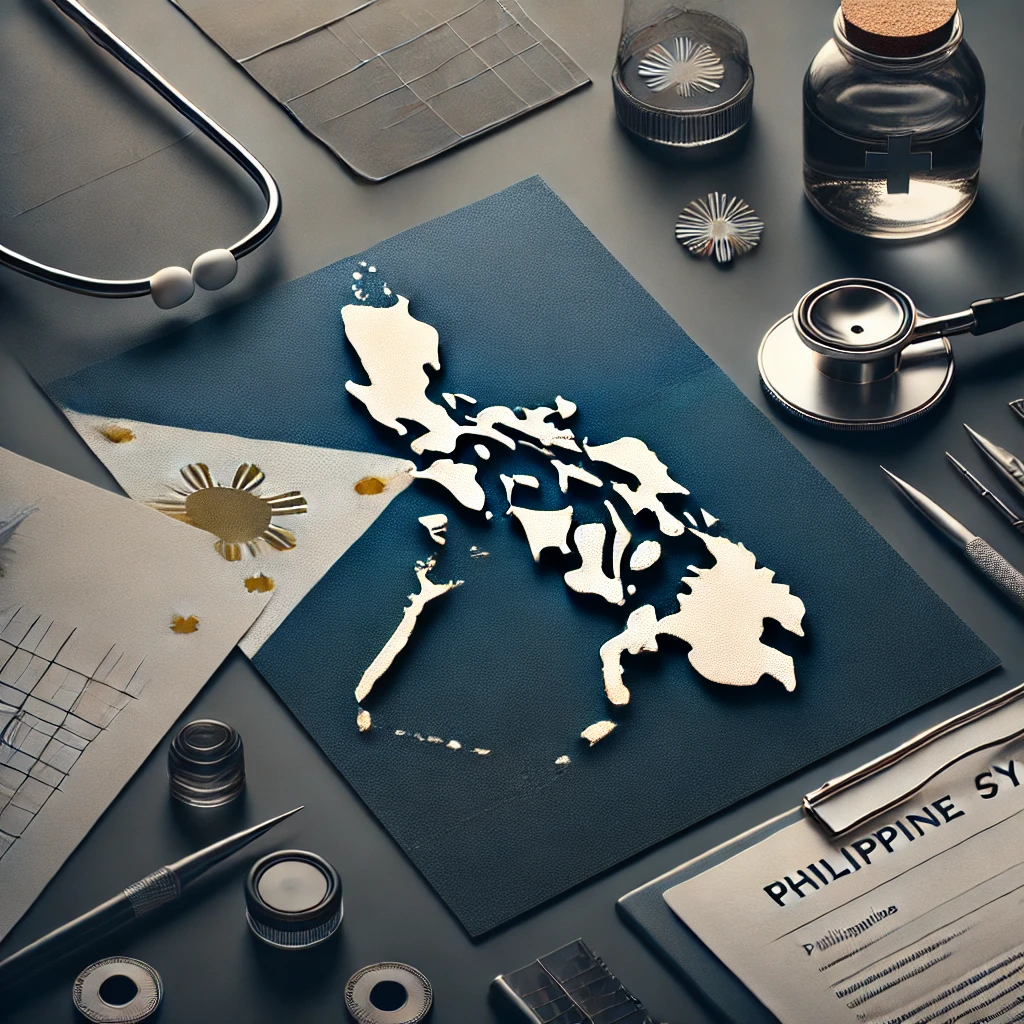The Philippine healthcare system is a complex network of public and private institutions, shaped by the country’s unique geographical, economic, and social challenges. As an archipelago of over 7,000 islands with a population exceeding 110 million, the Philippines faces significant hurdles in providing equitable and accessible healthcare to all its citizens. This blog post delves into the structure of the Philippine healthcare system, examines its accessibility, and highlights both its strengths and areas for improvement. By understanding the intricacies of this system, we can better appreciate the ongoing efforts to enhance healthcare delivery in the Philippines and identify opportunities for further development.
Historical Context
The evolution of Philippine healthcare
The Philippine healthcare system has undergone significant transformations since the country gained independence in 1946. Initially, the system was heavily centralized, with the national government taking primary responsibility for healthcare delivery. Over the decades, various reforms have been implemented to decentralize healthcare services and improve accessibility. The Local Government Code of 1991 marked a significant shift, transferring many healthcare responsibilities to local government units (LGUs). This decentralization aimed to make healthcare more responsive to local needs and improve service delivery at the grassroots level. However, it also introduced new challenges, such as disparities in healthcare quality and funding across different regions. Understanding this historical context is crucial for appreciating the current structure of the Philippine healthcare system and the ongoing efforts to address its challenges.
Structure of the Philippine Healthcare System
Government agencies and their roles
The Philippine healthcare system is overseen by several key government agencies, each with specific responsibilities:
- Department of Health (DOH): The primary agency responsible for health policy formulation, regulation, and overall healthcare system management.
- Philippine Health Insurance Corporation (PhilHealth): The national health insurance program provider, aiming to ensure financial protection for all Filipinos.
- Food and Drug Administration (FDA): Responsible for regulating food, drugs, medical devices, and cosmetics to ensure safety and efficacy.
- Commission on Population and Development (POPCOM): Focuses on population management and reproductive health programs.
These agencies work in conjunction with local government units and private sector entities to deliver healthcare services across the country.
Public healthcare facilities
The public healthcare system in the Philippines is organized into a hierarchical structure:
- Barangay Health Stations (BHS): The most basic level of healthcare, providing primary care services at the community level.
- Rural Health Units (RHUs) and Urban Health Centers: Offer more comprehensive primary care services and act as referral points for BHS.
- District and Provincial Hospitals: Provide secondary care services and serve as referral centers for primary care facilities.
- Regional Hospitals and Medical Centers: Offer tertiary care services and specialized treatments.
This hierarchical structure aims to ensure that basic healthcare services are available at the community level, with more complex cases being referred to higher-level facilities.
Private healthcare sector
The private healthcare sector plays a significant role in the Philippine healthcare system, particularly in urban areas. It includes:
- Private hospitals and clinics: Range from small primary care clinics to large tertiary hospitals with advanced medical technologies.
- Health Maintenance Organizations (HMOs): Provide prepaid health plans and managed care services.
- Private insurance companies: Offer health insurance products to complement PhilHealth coverage.
The private sector often caters to middle and upper-income segments of the population and is known for providing higher-quality services, albeit at a higher cost.
Healthcare Financing
Government funding and budget allocation
The Philippine government allocates a significant portion of its annual budget to healthcare. In recent years, there has been a trend towards increasing healthcare expenditure as a percentage of GDP. However, the Philippines still lags behind many of its Southeast Asian neighbors in terms of healthcare spending per capita.
Table: Healthcare Expenditure in the Philippines (2015-2020)
| Year | Healthcare Expenditure (% of GDP) | Healthcare Expenditure per Capita (USD) |
|---|---|---|
| 2015 | 4.39% | 136 |
| 2016 | 4.45% | 144 |
| 2017 | 4.45% | 153 |
| 2018 | 4.40% | 165 |
| 2019 | 4.36% | 178 |
| 2020 | 5.09% | 175 |
Source: World Bank Data (Note: This data is for illustrative purposes and may not reflect the most current figures)
The increase in healthcare expenditure, particularly in 2020, can be attributed to the government’s response to the COVID-19 pandemic. However, challenges remain in ensuring adequate funding for all aspects of the healthcare system, especially in rural and underserved areas.
PhilHealth and its coverage
PhilHealth, established in 1995, is the national health insurance program of the Philippines. It aims to provide universal health coverage to all Filipinos. Key features of PhilHealth include:
- Mandatory coverage for formal sector employees
- Subsidized premiums for indigent and senior citizens
- Coverage for a wide range of medical conditions and procedures
Despite efforts to expand coverage, challenges remain in achieving truly universal health insurance. Issues such as incomplete population coverage, limited benefit packages, and high out-of-pocket expenses continue to be areas of concern.
Out-of-pocket expenses
Out-of-pocket (OOP) expenses remain a significant issue in the Philippine healthcare system. Despite the existence of PhilHealth, many Filipinos still face substantial financial burdens when seeking medical care. Factors contributing to high OOP expenses include:
- Limited coverage of certain medical procedures and medications
- Co-payments and deductibles in insurance plans
- Preference for private healthcare facilities, which often charge higher fees
Reducing OOP expenses is a key policy goal, as high healthcare costs can lead to financial hardship and discourage people from seeking necessary medical care.
Accessibility of Healthcare Services
Geographic disparities
The Philippines’ archipelagic nature presents unique challenges in healthcare accessibility. Significant disparities exist between urban and rural areas, as well as between different regions of the country. Urban centers, particularly in Metro Manila and other major cities, generally have better access to healthcare facilities and medical professionals. In contrast, rural and remote areas often face shortages of healthcare providers and limited access to advanced medical technologies.
Healthcare workforce distribution
The distribution of healthcare professionals across the Philippines is uneven, with a concentration in urban areas and a shortage in rural regions. This disparity is driven by factors such as:
- Higher salaries and better career opportunities in urban centers
- Limited infrastructure and resources in rural healthcare facilities
- Personal preferences of healthcare professionals for urban lifestyles
To address this issue, the government has implemented various programs to incentivize healthcare workers to serve in rural and underserved areas. However, challenges persist in achieving an equitable distribution of healthcare professionals across the country.
Telemedicine and digital health initiatives
In recent years, the Philippine healthcare system has begun to embrace telemedicine and digital health solutions to improve accessibility, particularly in remote areas. These initiatives include:
- Teleconsultation services connecting patients with healthcare providers remotely
- Mobile health applications for health monitoring and education
- Electronic medical records systems to improve continuity of care
While these digital health initiatives show promise in improving healthcare accessibility, challenges such as limited internet connectivity in rural areas and the need for digital literacy among both healthcare providers and patients need to be addressed for their full potential to be realized.
Quality of Healthcare Services
Public vs. private healthcare
The quality of healthcare services in the Philippines varies significantly between public and private facilities. Private healthcare institutions generally offer higher-quality services, with more modern equipment and shorter waiting times. However, these come at a higher cost, making them less accessible to lower-income segments of the population. Public healthcare facilities, while more affordable, often face challenges such as:
- Overcrowding and long waiting times
- Shortages of medical supplies and equipment
- Limited availability of specialized services
Efforts are ongoing to improve the quality of public healthcare services, but significant disparities between public and private healthcare remain a concern.
Accreditation and quality assurance
To ensure the quality of healthcare services, the Philippines has implemented various accreditation and quality assurance mechanisms. These include:
- DOH licensing and accreditation of healthcare facilities
- PhilHealth accreditation for healthcare providers
- Professional regulation and licensing of healthcare professionals
While these mechanisms have helped to maintain certain standards of care, challenges remain in ensuring consistent quality across all healthcare facilities, particularly in rural and underserved areas.
Challenges and Areas for Improvement
Healthcare infrastructure
The Philippine healthcare system faces significant challenges in terms of infrastructure, particularly in rural and remote areas. Many healthcare facilities lack modern medical equipment, adequate supplies, and proper facilities for specialized care. Addressing these infrastructure gaps is crucial for improving the overall quality and accessibility of healthcare services across the country.
Health information systems
The development of robust health information systems is an ongoing challenge in the Philippines. While progress has been made in implementing electronic medical records and health information exchanges, many healthcare facilities, especially in rural areas, still rely on paper-based systems. Improving health information systems can lead to better coordination of care, more efficient resource allocation, and improved health outcomes.
Health workforce retention
The Philippines faces a significant challenge in retaining its healthcare workforce, particularly nurses and doctors. Many Filipino healthcare professionals choose to work abroad due to higher salaries and better working conditions. This brain drain affects the quality and availability of healthcare services, especially in rural areas. Addressing this issue requires comprehensive policies that improve working conditions, provide competitive salaries, and create attractive career pathways for healthcare professionals within the country.
Recent Reforms and Future Directions
Universal Health Care Act
In 2019, the Philippines passed the Universal Health Care Act, a landmark legislation aimed at ensuring that all Filipinos have access to quality healthcare services. Key provisions of the act include:
- Automatic enrollment of all Filipino citizens in the National Health Insurance Program
- Expansion of PhilHealth benefits to cover a wider range of health services
- Strengthening of primary care services and the referral system
While the implementation of this act is still ongoing, it represents a significant step towards achieving universal health coverage in the Philippines.
Health system resilience and pandemic preparedness
The COVID-19 pandemic has highlighted the importance of building a resilient healthcare system capable of responding to public health emergencies. In response, the Philippine government has initiated efforts to:
- Strengthen disease surveillance and early warning systems
- Improve the capacity of healthcare facilities to handle surge demand
- Enhance the production and distribution of essential medical supplies
These initiatives aim to better prepare the Philippine healthcare system for future health crises and improve its overall resilience.
Digital health transformation
The Philippine healthcare system is increasingly embracing digital technologies to improve healthcare delivery and accessibility. Future directions in this area include:
- Expansion of telemedicine services to reach underserved areas
- Implementation of a national electronic health record system
- Use of artificial intelligence and big data analytics for health planning and decision-making
These digital health initiatives have the potential to significantly improve the efficiency and effectiveness of healthcare delivery in the Philippines.
Conclusion
The Philippine healthcare system, with its complex structure and diverse challenges, continues to evolve in its quest to provide accessible and quality healthcare to all Filipinos. While significant progress has been made in areas such as health insurance coverage and primary care provision, challenges remain in addressing geographic disparities, improving healthcare infrastructure, and retaining skilled healthcare professionals. Recent reforms, such as the Universal Health Care Act, and ongoing initiatives in digital health and system resilience offer promising pathways for future improvements. As the Philippines continues to develop its healthcare system, a focus on equitable access, quality improvement, and sustainable financing will be crucial in ensuring that all Filipinos can enjoy their right to quality healthcare.
Disclaimer: This blog post is based on research and publicly available information as of the time of writing. While every effort has been made to ensure accuracy, healthcare systems are complex and subject to frequent changes. Readers are encouraged to consult official sources for the most up-to-date information. If you notice any inaccuracies in this post, please report them so we can correct them promptly.




